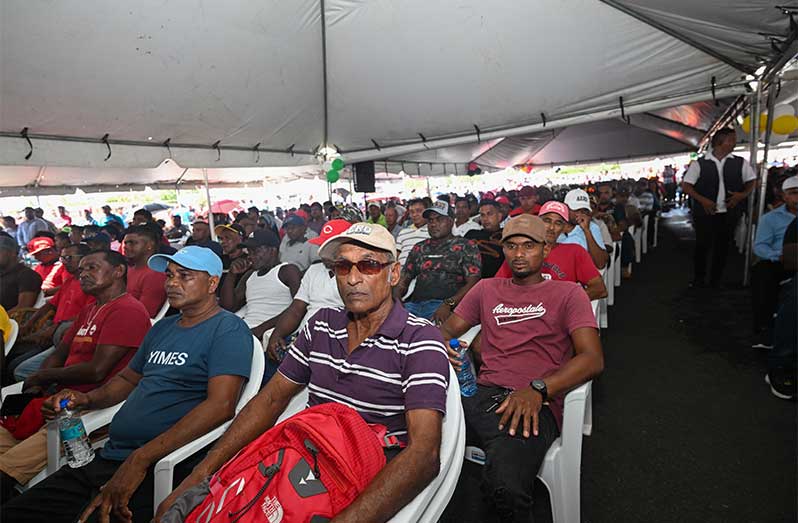–access to new lands, enhanced drainage also on the cards
RESPONDING to the immediate needs of farmers in Region Three (Essequibo Islands-West Demerara), the government of Guyana has set aside some $50 billion to begin the rehabilitation of farm-to-market roads.
This was announced on Sunday by President, Dr Irfaan Ali, during a community engagement with fisherfolk, rice farmers, and cash-crop producers.
The President stated that the government is actively crafting strategic food-production plans tailored to the specific needs of farming districts across the country.
Specifically for Region Three, an audit is underway to examine the conditions of farm-to- market roads.
“Right now, we’re completing an audit of all the farm-to-market access dams across the region. We are going to set aside $50 billion to start upgrading all of those farms-to-market access dams into all-weather, hard-surface roads.”

This investment is expected to reduce transportation costs and minimise produce spoilage, thereby improving overall efficiency in getting goods from farms to markets.
“Let me say to you that agriculture, food production is not a one size fits all.
“Agriculture and food production is about specific policies and measures depending on the competitive advantage of each and every region,” the President said, highlighting the importance of continued engagements with government officials, farmers and other stakeholders to address concerns and develop effective solutions.
“That is why we’ve been going through all across the country to address this issue of agriculture and food production, but with a specific development strategy for every single one of our regions, because the aim is to position Guyana as a leading producer of food for the entire Region,” he added.
NEW LANDS
In addition to the government’s plans to fix all-weather roads, President Ali pointed out how the investment in new highways will open new transportation links, allowing farmers to not just access new lands, but also new markets.
He explained that the new highway to Parika and the Del Conte Road link, complemented by the Sandhill Road link will unlock an estimated 75,000 acres of land for which people have transports or leases.
“These investments will open up those lands, giving farmers access. But access alone is not enough—capital investment for development is significant. That’s why the government will form agricultural districts and assign machinery to assist with land development,” President Ali explained.
Ultimately, the aim is to enhance connectivity between the mainland and island communities in the Essequibo River, further integrating the national food production network.
“We are talking to you about a clearly defined vision—understanding what investments are needed and committing to making those investments a reality.”
DRAINAGE AND IRRIGATION
While the government continues to invest heavily in drainage and irrigation (D&I) systems countrywide, the President proposed a more targeted approach that empowers farmers to manage their own D&I systems by district.
“For example, in Canal Number One, we’ve assigned two bobcats and two tractors to the farmers’ group. We provide the capital equipment, and they will have to maintain that capital equipment and keep it in operation.”
This initiative is expected to empower farmers and reduce their input costs, while the government continues to invest in larger, more complex national drainage systems.
In Budget 2025, a total of $72.3 billion has been allocated for upgrades to Guyana’s national drainage and irrigation network.
President Ali noted that farmers will also receive mobile pumps.
Outside of these initiatives, the government he noted, will also continue to support farmers with direct cash transfers and other incentives to boost production.
“Direct transfer is something that we will continue to do to subsidise and enhance your income base, so you don’t have to come forward and tell me about direct transfer and cash grant that is a given in the coming months and years ahead.”



.jpg)










